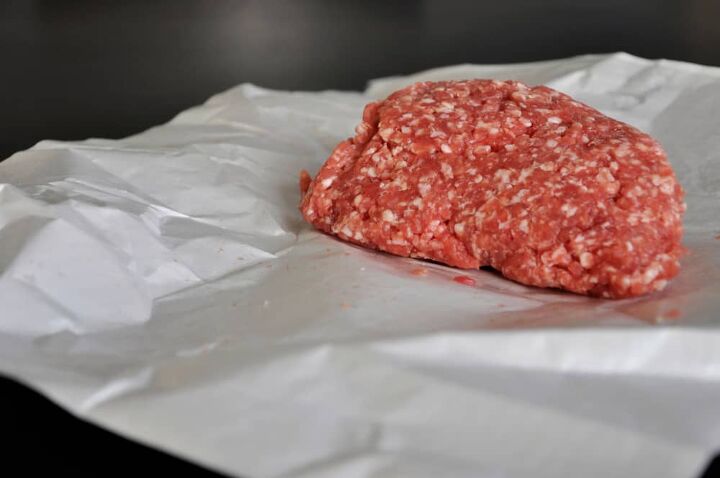Parchment Paper Vs. Butcher Paper: What Are The Major Differences?

When cooking, there are a ton of different sheets and papers that get used for various things in the cooking process. You may be familiar with aluminum foil, plastic wrap, wax paper, butcher paper, and parchment paper.
You want to bake a cake or cookies, but not sure which type of paper will hold up. We know parchment paper is non-stick, but maybe you’re looking to grill or smoke your meat. There are so many different cooking applications. So, which one is better: parchment paper or butcher paper?
Butcher paper is thicker and can absorb more than parchment paper. Parchment paper is non-stick and has a lower heat threshold, so it’s more ideal when baking. Butcher paper is better for storing raw meat and grilling. If you’re smoking meat, parchment paper is the best option for crutching meat because it allows the meat to retain a decent bark.
Now that we know all of that, let’s dive into the pros and cons of each type of paper, and what else we know about it.
What is Parchment Paper?
Parchment paper is used during the cooking process for a wide range of different food items. This type of paper is constructed of cellulose with a variety of useful properties. Its primary purpose is for lining cooking utensils.
You could use something like a non-stick spray, but parchment paper tends to result in an easier cleanup. Don’t confuse parchment paper with wax paper; the latter can’t stand up to high temperatures or direct heat exposure for long. You can use parchment paper in the oven while you wouldn’t be able to do the same with wax paper.
Types of Parchment Paper
- Bleached parchment paper is white in color from chlorine treatments.
- Unbleached parchment paper is naturally tan and not treated with chlorine. It tends to be more expensive than its bleached counterpart.
Both bleached and unbleached parchment paper come in pre-cut sheets or rolls and can withstand temperatures up to 450 degrees Fahrenheit.
What is Butcher Paper?
Butcher paper and parchment paper may seem the same, but butcher paper is of heavy-duty quality. Moreover, butcher paper is primarily used for wrapping meats, and it can even be used for BBQing and grilling.
You can generally find butcher paper in both rolls and sheets to fit whatever purpose you plan to use it for. Butcher paper is so strong because it has a sulfide and caustic soda mixture along with low lignin to give it high strength and durability levels.
Types of Butcher Paper
- Pink butcher paper is used primarily in butcher shops to wrap meat products. Also known as peach paper, its pink color blends in with the meat. The material is also very breathable, making it a favorite choice for pitmasters who smoke meats.
- White butcher paper is uncoated and often used to wrap sandwiches or subs. It’s also used a lot for crafting or covering tables.
- Gardenia butcher paper is a type of premium butcher paper whose color goes well with fish and poultry. Wrapping meat in gardenia paper protects the product from outside moisture.
- Peach-treated butcher paper is another type of premium butcher paper. It looks similar to pink butcher paper, but peach-treated paper is better at preserving freshness and promoting water resistance.
Pros of Parchment Paper
Versatile in its uses, parchment paper has quite a few advantages including its resistance to heat and moisture. It’s also non-stick and promotes easy clean-up.
Non-Stick
Parchment paper provides a non-stick surface, keeping food items intact during the cooking process. This makes it easy to flip food items for even cooking without worrying that they’ll get stuck to the pan.
Heat and Moisture Resistant
Parchment paper is ideal for cooking in the oven, especially when compared to other types of wraps or papers. Unlike wax paper, it’s heat resistant so that it won’t break down in the oven. Parchment paper is also waterproof and won’t break down with wetter ingredients.
Easy Clean-Up
Parchment paper limits grease buildup during the cooking process, allowing for easier cleanup. Additionally, parchment paper can be reused so it’s environmentally friendly.
Versatile
Parchment paper has a variety of uses. Not only can you line a baking sheet with it but you can also use parchment paper to line cake tins or pizza stones. It’s great for covering countertops during food prep. Some recipes actually require the meat product to be wrapped in parchment paper while cooking.
Additionally, it can also be used decoratively, not just for cooking purposes.
Cons of Parchment Paper
There aren’t a ton of disadvantages with parchment paper other than its tendency to easily tear apart. Even though it’s non-stick, when it tears, little pieces tend to stay behind and stick to food, causing frustration.
From a decorative standpoint, parchment paper tends to come in just a single color, so you are limited from that aspect.
Pros Butcher Paper
Butcher paper has many great qualities that make it an asset in the kitchen. Not only can it be used for many things, but its durability adds to its versatility.
Heat Resistant
Butcher paper is highly heat resistant, making it great for smoking meat. Keep in mind, if you plan to use butcher paper on the grill, make sure it’s all paper. Some butcher paper has a layer of wax that will melt when heated.
Note: butcher paper should never be used on an open flame.
Durable
Butcher paper is constructed to stand up to heavy-duty use, and it’s much thicker than parchment paper; it won’t tear as easily. Due to its tensile strength, butcher paper makes for a strong, durable protective cover that will keep the meat well protected.
Additionally, butcher paper provides a more controlled smoking environment for meats, creating more flavorful BBQing.
Eco-Friendly
Butcher paper is recyclable! It isn’t made with any additives or harsh chemicals (like bleach) which is why you won’t find bright white butcher paper. Because it’s made from natural materials, it also means is 100% safe for food use.
Versatile and Affordable
Like parchment paper, butcher paper can be used for decorative purposes. Unlike parchment paper, it comes in a wide array of colors for more decorative options. Just as parchment paper is available in both rolls and sheets, so too is butcher paper. Butcher paper burns quite well and can be a wonderful starter for wood pellets and charcoal in grills.
It is highly affordable, making it optimal to purchase for just about any situation around the kitchen. While butcher paper is affordable, it’s still slightly more expensive than parchment paper.
Cons of Butcher Paper
Unlike parchment paper, butcher paper has slightly more disadvantages, the biggest probably being that it isn’t non-stick. It also is not resistant to moisture.
Not Moisture Resistant
Butcher paper generally doesn’t do well with wet foods because its main purpose is to allow the meat to breathe. It’s important to drain out as much moisture from meats as possible before wrapping so you don’t have a soggy bundle.
Not Non-Stick
Unlike parchment paper, food can stick to butcher paper. There is no grease to it, leaving it less slick than options like parchment paper or wax paper. Butcher paper is generally best for preparing meats. While it can be used during the cooking process, it’s important to remember that it does not possess non-stick qualities.
Parchment Paper vs. Butcher Paper: Similarities
While they share similar properties and even similar uses, parchment paper and butcher paper are not quite the same thing. They are not completely different and can be used for things like grilling brisket, for example.
Both sheets are similar in flexibility and texture. They also share similarities in heat resistance, making them ideal for smoking and grilling meats.
Parchment Paper vs. Butcher Paper: Differences
The two share many similarities, but it is important to know the major differences between them to truly understand their purposes.
- Construction and chemicals. Perhaps the most important difference is the chemicals used and the construction of the two. Parchment paper only uses sulfuric acid and, in a few cases, caustic soda along with some paper pulp. Butcher paper, meanwhile, uses caustic soda and sulfide as well as that paper pulp.
- Usage. Butcher paper tends to be used predominantly for cooking meats and grilling rather than straight oven usage. Butcher paper also tends to come in a variety of options as opposed to parchment paper. Parchment paper is great for general oven use and will keep foods from sticking to the surface of the utensil being used.
- Color options. While color may not be a big deal, there are some who like color options. Parchment paper tends to come in one color whereas butcher paper comes in a wide range. If you care about the aesthetics of your various food dishes, butcher paper may be the better choice.
- Moisture. If you plan on wrapping foods that have high moisture content, butcher paper may not be the best choice. It is not stickproof or moisture-resistant like parchment paper is.
So, Which is Better?
While parchment paper wins out on versatility, there is no simple answer as to which one to choose. When it comes down to it, you must choose between parchment paper and butcher paper based on the foods you plan to cook and the needs that you have. It is a good idea to have both on hand if you find yourself in the kitchen on a regular basis.

Ryan Womeldorf has more than a decade of experience writing. He loves to blog about construction, plumbing, and other home topics. Ryan also loves hockey and a lifelong Buffalo sports fan.
More by Ryan Womeldorf



























